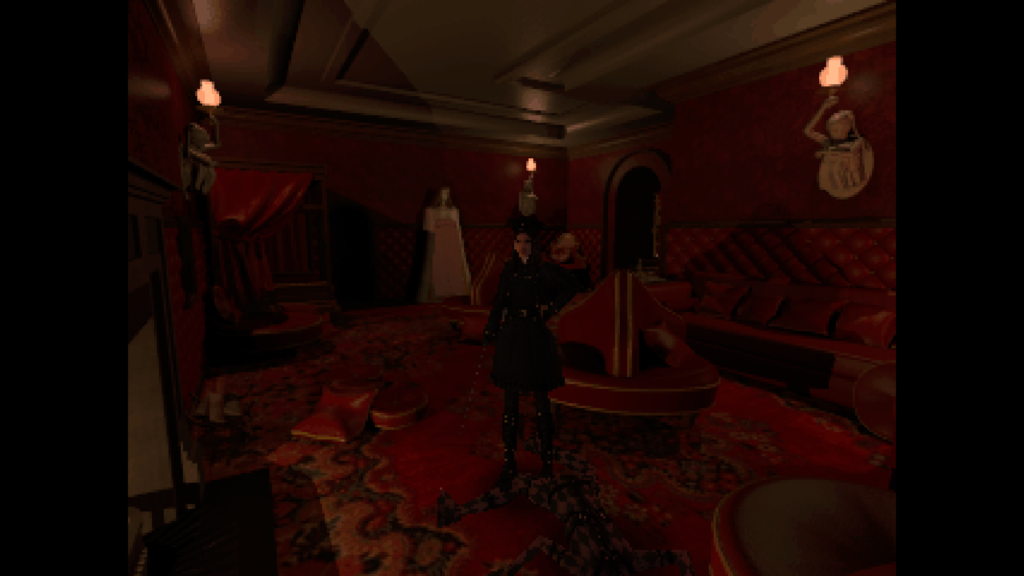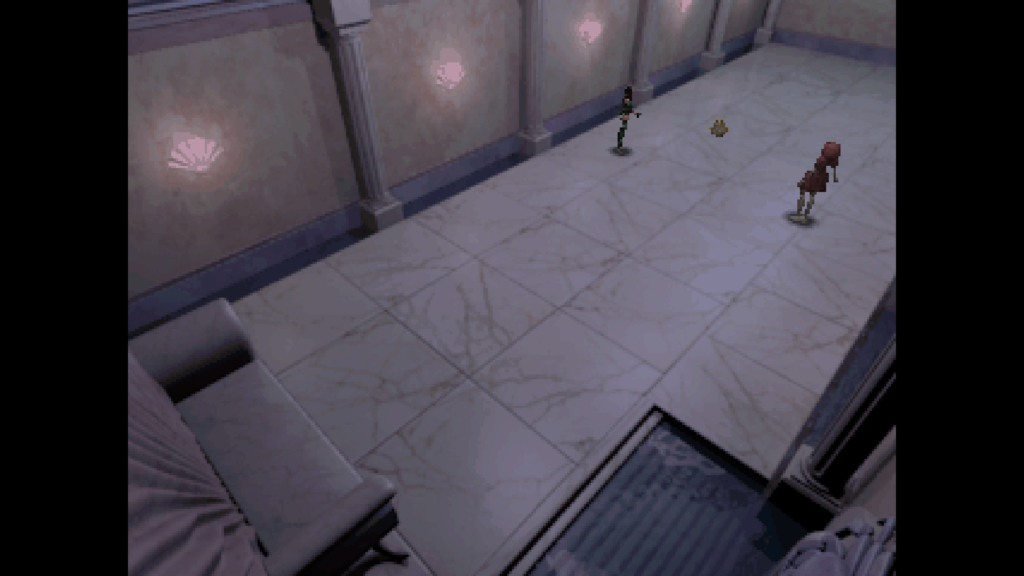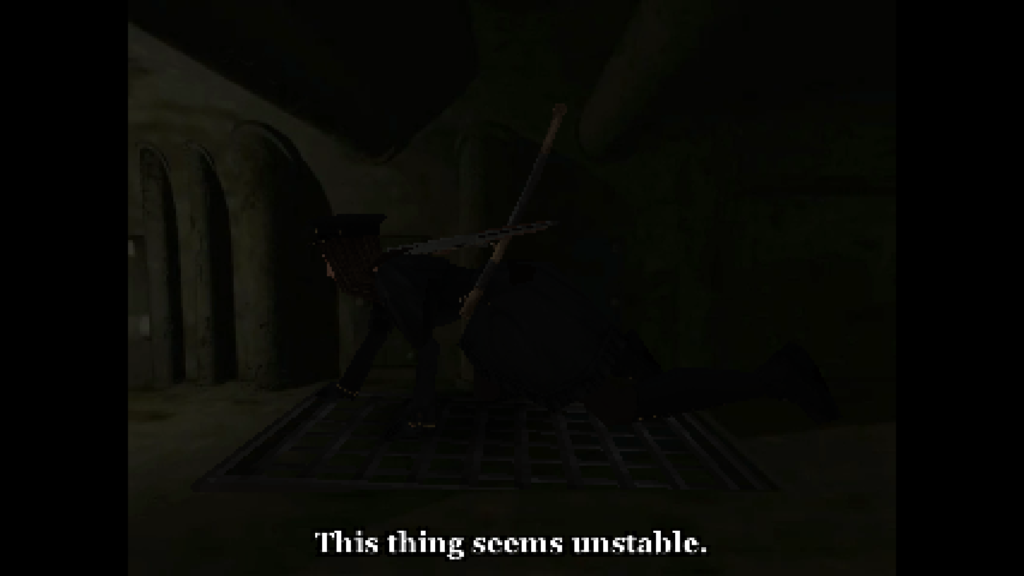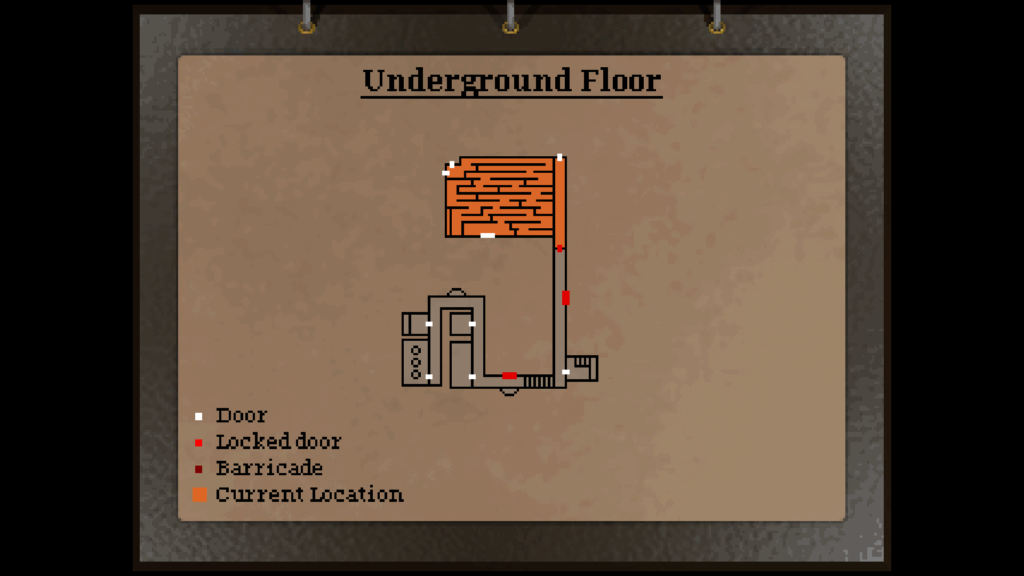
There’s a sentiment in horror that less means more. By way of pixelated character builds, the handicap of pre-rendered vantage points, and in the scarcity of supplies needed to reach your goal, a potent sort of suspense is achieved. Alisa, developed by Casper Croes, is a retro horror throwback title in the vein of Alone in the Dark and Resident Evil that was released on Steam on Oct. 22, 2021.
Unlike its contemporaries in this genre, it does not attempt to modernize the gameplay in any substantial way. Alisa feels, looks, and sounds like a genuine product of the SEGA Saturn or Sony PlayStation. It’s hard. Much harder than the games it emulates, yet still captures exactly what made those games so enjoyable. Furthermore, it carves out a small niche of its own, making it an adventure horror fans will find both nostalgic and original.
Set in the 1920s, you assume the role of Alisa, an Elite Royal Agent. Blueprints of a sensitive nature have been stolen by a spy, and the ERAs have been mobilized in response. Paired off into teams, the agents ride a train across the countryside, with Alisa and her partner disembarking at a stop in a rural hamlet to search for clues. After interviewing an elderly man, Alisa and her partner spot the spy in the forest. They make chase, getting separated partway. Soon after, she is ambushed by what appear to be monstrous beings made up of doll-like appendages before being dragged underground.

When she awakens, Alisa finds herself on a bed in a small room, having been redressed into a blue and white outfit. She leaves the room to investigate, and very quickly comes to realize just how much trouble she is in. Giant humanoid dolls patrol the mansion. The front door is locked, and the only way to go seems to be deeper into the labyrinthine halls of the sadistic house.
The introduction sequence plays out in a linear fashion, with Alisa free to explore the train station and surrounding area, though there is nothing of use to find aside from the triggered story segments. No comprehensive tutorial is given, but piloting Alisa about in this consequence-free environment, learning how to investigate your surroundings and shoot your weapon, should be enough to get you reacquainted with the bygone style of controls.

Her pistol having been placed conveniently in the bedside table, Alisa is prepared to meet the resistance awaiting outside her room, though with only a scant few rounds, you’ll have to pick and choose your fights – at least at first. If you make it to the first safe room in-tact, you’ll meet Pol, and hand puppet (on somebody’s hand, creepily enough) living in the walls of the house. He explains that he can help you with a number of things, like additional equipment and ammunition, as well as saving your game, should you provide him with tooth wheels. Tooth wheels can be found throughout the mansion, though the most plentiful supply is wrought by pulling them out of dead puppets.
Something Old, Something New
Though Alisa does stress resource management, this monetary twist on the formula is one of the game’s best aspects. There are simply not enough ammunition or first-aid kit pickups in the mansion to complete the game. Thus, you’ll need to work with Pol in order to buy new weapons, items, and outfits, and this means going on the offensive.

The weapons available for use include a PPK, blunderbuss, Wilson M1 automatic rifle, and more. There is also a sabre up for sale, should you want to save on ammo. The enemy variety is great, and you’ll be forced to alter your approach and strategy constantly, pulling off some fancy footwork with those old-fashioned tank controls in order to take them all down.
Pol has ammo and health kits available for purchase, though only in limited supply, meaning you’ll need to make sure your equipment lasts until he restocks. A variety of outfits are also available for purchase, granting Alisa different perks like reloading speed or maneuverability in water. These can be swapped between in the wardrobes located in safe rooms.

Though you are not burdened with inventory limits on items like keys or ammo, weapons and outfits may only be swapped at safe points, and Alisa can only wear one outfit at a time and carry two weapons. Equipped weapons can be switched between on the fly with the press of a button, though for unlocking doors, you’ll need to place yourself in front of the lock, open your inventory, and then select the appropriate key as opposed to the game doing it for you.
It only costs one tooth wheel to save your game, though that’s not to say you’ll be saving very often. You’ll need to save up every tooth wheel you can in order to be prepared for the resistance ahead, and as such, you’ll probably need to experiment with different equipment. This means reloading your game, or dying, a lot. Of my total playtime, only a fraction of it was actually continuous play, with several hours being the result of deaths and reloads from unsuccessful attempts.
At the beginning, I found this quite punishing, as my scant tooth wheel supply, coupled with the vast distances between safe rooms (which aren’t always safe, mind you), led to me redo the same segment multiple times. However, as you map your way through, finding out which rooms to tackle in which order, and dissecting enemies without taking (too much) damage, you can better prepare for subsequent runs.

Control Issues
The controls and camera angles can, unfortunately, contribute to the difficulty from time to time. Alisa also only features partial gamepad support, meaning you can assign buttons for play, but the stiffness and unresponsiveness of them can sometimes be the difference between life and death thanks to this lack of optimization. One segment early on involving avoiding a series of swinging pendulums overtop a bridge proves more difficult than it should be thanks to Alisa stopping mid-stride, or continuing forward several steps after releasing the run button, resulting in her getting knocked off of the bridge and losing valuable health.
Alisa will not snap aim to the closest enemy either, giving the player more control over their targeting (I guess). However, a small aiming reticle placed in the bottom corner of the screen next to Alisa’s health and ammo count will let you know if you are in fact aiming at an enemy or just thin air. You can often use the environment to your advantage, sometimes getting enemies stuck in a corner, and then wailing away at them with the sabre scot-free, for example. However, there are plenty of times where the tables turn and Alisa is trapped in a corner, hopelessly spinning just out of camera range while an enemy rips her apart in a wild mess of pixelated violence.

Classical Beauty
Music plays throughout most of the game, reflecting the theme of particular mansion wings. It sounds akin to early PC horror game fare, like Alone in the Dark or Phantasmagoria. The voice acting is, appropriately, awkward. How much of this was intentional is unknown, but it feels genuine, with the voice actors perhaps not even speaking English as their first language, as opposed to the actors purposefully trying to sound off-key.
The graphics really steal the show here, looking like (early) 3D fare on consoles like the Saturn. The pixilation filter and scaling of the models is heavily exaggerated, and details like warping textures are used to great effect. Croes has even implemented a mesh square detail for when Alisa finds herself in water, which was a common workaround for transparency effects on SEGA’s 32-bit console. The game only runs in 4/3 ratio, though supports a variety of resolution options. The pre-rendered cinematic sequences are a real treat too, and look so authentic that I kept expecting to see the Duck Corporation’s TrueMotion logo.

The pre-rendered environments also look stunning, and a select few even animate or move with Alisa. As mentioned, a few of the angles are stretched a bit far, leading to confusion when enemies appear and you either try to avoid or combat them, but for the most part the flow between screens is smooth and easy to read.
The mansion itself is broken up into wings. The main hall you start in contains a kitchen, dining hall, bedrooms, and a library, all of which are decorated with an appropriate amount of velvet and unsettling landscape and portrait paintings. Downstairs in the basement, you’ll find an elegantly constructed marble cistern and bath, as well as an absolutely insane underground circus ring. Wings are locked off doors, with the assigned keys being body parts and animals like ‘eye’, ‘hand’, and ‘fish’, in place of, say, the Raccoon City Police Department’s card-coded keys.

The key ring in Alisa’s inventory actually stands out as a highlight, with the macabre animations of the different keys being a treat to watch as you flip through them to open doors. The enemy variety is phenomenal, with each unique doll or monster type having its own set of animations. The cocktail of cymbal-wielding monkeys, gentleman dolls crawling on all fours, giant ballerinas, and more constantly keep you on your toes, and in a way make the game feels closer to Devil May Cry than Resident Evil.

Brain Teasers
Almost every room houses some sort of challenge in the form of combat or brain teaser. These challenges include box puzzles, hidden codes, slider mechanisms, and arcade-style enemy waves, just to name a few. They’re certainly better thought out than what you’d find in some actual survival horror games from the nineties, though that’s not to say they’re so difficult that you’ll be stumped for long.
One interesting omission is the lack of lack and key designations on the map screen. The game does mark on your map which rooms are locked and unlocked, though it does not assign any sort of colour or marker to connote what type of key is needed to open locked doors. Unless you’re keeping handwritten notes, you’ll probably forget which keys are needed for which doors. Thus, when you do get a new key, you may find yourself rerunning the entire floorplan to see where it goes.

I ran into several glitches when playing, most of which were hampering to the point of having to quit and restart, or worse, wait for a patch. A ladder climbing animation malfunctioned at one point, freezing Alisa mid-air, with the only option for escape being restarting the game. Another glitch prevented me from entering a pool in the basement, and I had no choice but to quit and wait for Croes to patch the error before I could continue playing. Updates have been frequent, and praise needs to be given to Croes for his dedication and attentiveness to getting the game up and running, but be warned that there may still be a few bugs scurrying about as of this review.

Conclusion
Alisa is the perfect game for the horror fan looking for a genuine experience out of the past. Unfortunately, it carries some heavy baggage, like unresponsive controls, trigger glitches, and the occasional poor vantage point. Nevertheless, its success in authentically recreating that classic horror atmosphere make it easy to recommend. It adds a few twists of its own without betraying the classic feel, which is another accomplishment in and of itself. Provided you can stand the steep difficulty and repetition needed to succeed, the game is a visual and audible tour de force wholly worth experiencing. Turn out the lights, turn down the resolution, and plug in that USB Saturn controller for maximum effect. Alisa is a total trip (back in time).

Note: Author contributed to the KickStarter campaign.

